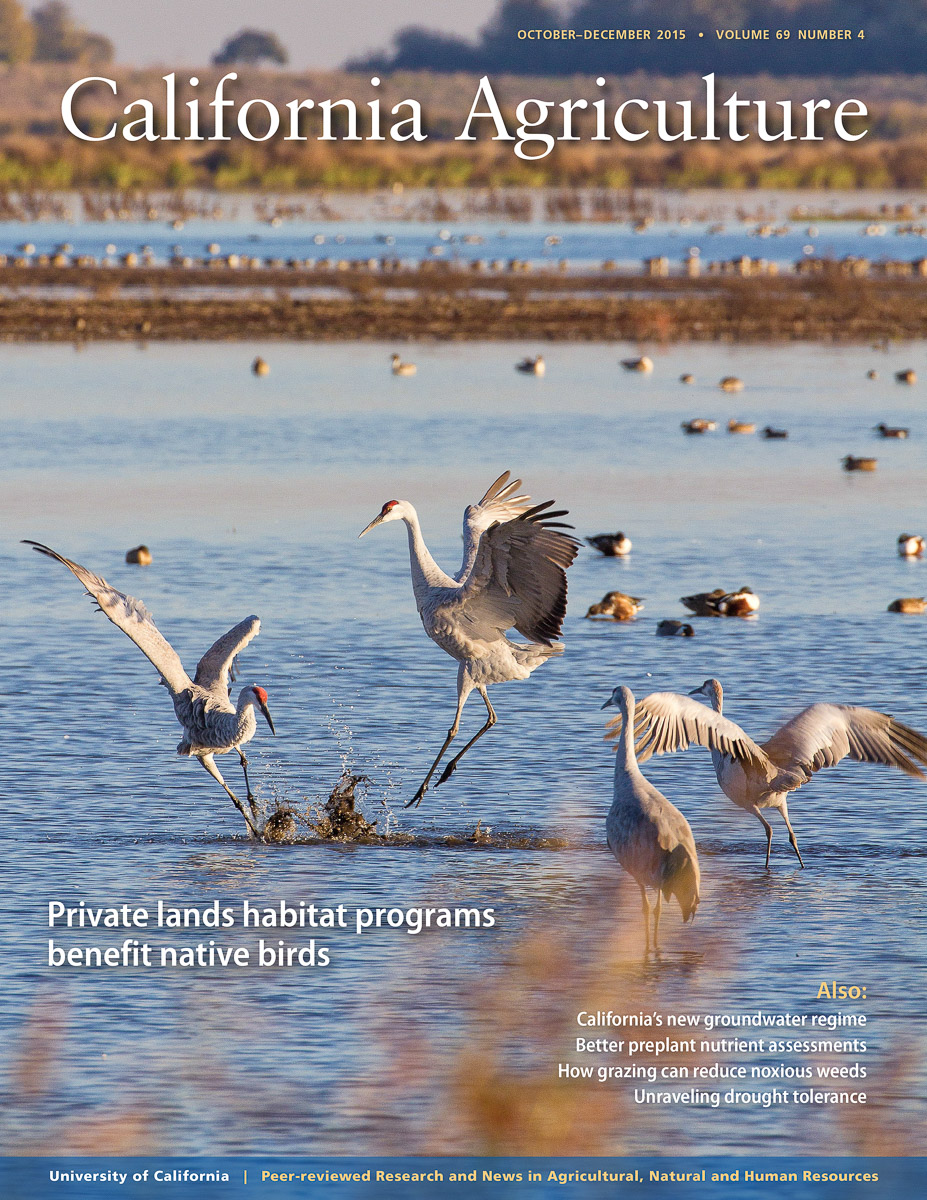All Issues

Private lands habitat programs benefit native birds
Cover:
Sandhill cranes (Grus canadensis) on Staten Island in the Sacramento-San Joaquin Delta. The birds are in a wheat field that is flooded seasonally to provide habitat. A 5-year study of California’s North Coast and Central Valley found that private wetlands and croplands enrolled in habitat conservation programs support a wide range of birds, including many species designated as threatened or endangered. Photo by Will Suckow.
October-December 2015
Volume 69, Number 4
Volume 69, Number 4





